Lobsters and lighthouses: road-tripping through Nova Scotia
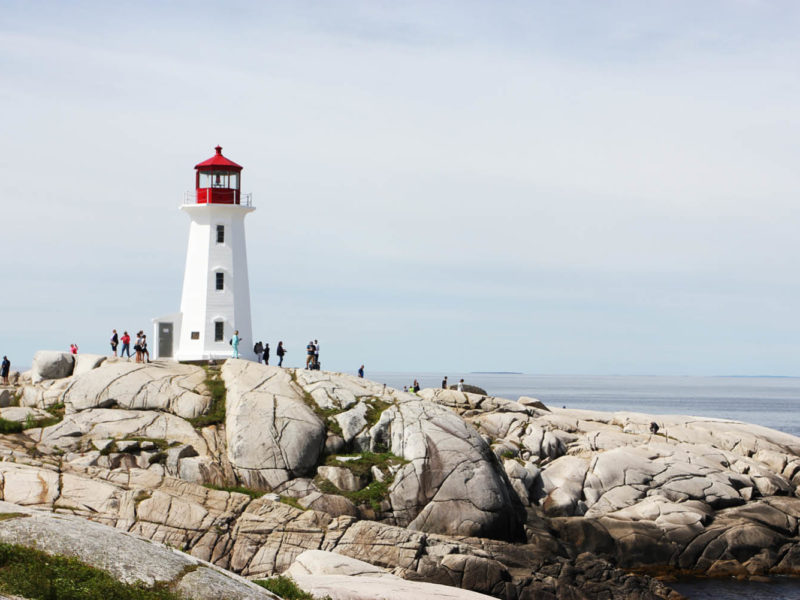

Peggy’s Point Lighthouse at Peggy’s Cove is a must-stop on any Nova Scotian road trip.
An eye-opening road-trip for the ages…
A Nova Scotian road trip is an opportunity to explore the breath-taking seafaring towns of this beautiful province, but as Lara Picone discovers, sometimes it’s the journey not the destinations that reveal the most about a place and her people.
There’s something about lighthouses. Find a lighthouse and you’re almost guaranteed to find people milling about beneath it, spiralling up its innards to peep out the top, and posing at its whitewashed base. Perhaps it’s nostalgia for a time before the GPS? When ship captains were enigmatic heroes and the seas held many mysteries. Or it could be that these seaside sentinels bore witness to many a wretched wreck, silently holding the secrets of sunken souls and tales of loneliness.
Whatever the historic appeal of these light-bearing beacons, there’s no doubt it endures today. If you’re the type who can’t go past a lighthouse without scrambling to its top, Nova Scotia is the place to come. With more than 160 historic lighthouses, you’ll need a fair bit of annual leave to document them all and a road trip is a good way to start. Of course, this Atlantic province on Canada’s east coast has more than lighthouses to offer; its rich maritime culture, profound beauty, and layered history make it a destination worthy of your undivided attention. And the best part is, it’s still relatively undiscovered.
Peggy’s Cove
Few would argue that the best way to begin a Nova Scotian road trip is with a stop at Peggy’s Cove. Home to possibly one of the most photographed lighthouses in Canada, this idyllic village is less than an hour’s drive from Halifax.
Idyllic is not a hyperbolic adjective here. With the storybook red-and-white lighthouse standing proud on smooth, wave-washed granite boulders, and traditional wooden boatsheds mirrored in the glassy inlet, Peggy’s Cove is so adorable it makes your heart ache to belong here. You can almost paint yourself into the setting: you’re scaling fish in the summer sun or wistfully gazing out to sea waiting for a loved one’s vessel to materialise on the horizon. There’s just one thing destabilising the illusion… the hundreds of other people who’ve come to do the same thing.
But who can begrudge sharing this beauty with a few tourists? We happily join them scuttling over the granite boulders and poking about the village until it’s time to hit the road again.
Mahone Bay and Lunenburg
It’s near-impossible to arrive anywhere in Nova Scotia in a timely manner. The route from one picturesque town to another is so littered with photogenic scenery one feels compelled to pull off the road, point the SLR and soak it all in. Serene lakes fringed by adorable houses, punctuated with miniature islands and anchored with painted, wooden dinghies are delightful time-wasters. Or, you could say they’re reminders that it’s about the journey not the destination.
Still, the destination is worth skipping past a few lakes to make, even if I wince like a pup not allowed in the park. Next on the Nova Scotian must-visit list is the UNESCO World Heritage Site of Old Town Lunenburg.
Having lost track of time mooching about the dollhouse-perfect village of Mahone Bay – where domestic tourists gaze into the windows of the local real estate, arrested mid-lick of their ice-cream by the fleeting vision of owning a summer house here – we’re late to Lunenburg.
Shelah Allen is waiting for the stragglers of her group at the Hogwarts-esque Lunenburg Academy before she sets off on her walking tour of the historic town. An animated Shelah regales us with the history of the German Lutheran settlement, their uneasy relationship with the British, and the Lunenburgers’ penchant for superstitions and witchcraft born from the combination of the aforementioned Lutherans and a seafaring culture. She points out the Cape Cod, Victorian and Georgian architecture styles that make up the town and tells us how fortunes arrived at the harbour by fin and sail.
It’s clear Shelah loves her job, and her town. She buoyantly paints the story of Lunenburg, adding shade and highlights to animate characters and buildings, with as much enthusiasm as if it was the first retelling. She finishes her narration with the tale of Lunenburg’s pride and joy: the much-adored Bluenose II, Nova Scotia’s most-famed racing schooner and star of the Canadian 10-cent piece.
They really love that boat here. Apart from a dedicated Bluenose II souvenir shop, where you can pick up a replica of the honoured vessel, the local Ironworks Distillery makes a very nice Bluenose rum (a tasting at the distillery is recommended), and there’s also the Blue Nose Brewery, whose beer you’ll find pretty much anywhere you stop to wet your whistle.
A good place for that come summer is The Half Shell Oyster Bar, which you’ll find stitched onto the side of the South Shore Fish Shack. This little shack looks out across the bay and to the golf course on the far bank, but it’s not just the locale you come for: the seafood is excellent. Incredibly fresh (of course) and free from the over-fried, over-salted, and over-garnished dishes served at many eateries in the province, everything here is simple, elegantly flavoured and delicious. Go for the scallops, a Lunenburg specialty, and the lobster roll. They don’t do a bad negroni, either.
Pray for rain to descend on Lunenburg, otherwise it’s a hard ask to leave the sweetshop town where the colourful wooden buildings huddle together like boiled lollies. The vibrant colours, Shelah explains, is a relatively modern addition. Houses were traditionally painted in austere white and black with the occasional russet red of an ochre and cod liver oil-painted building punching through the monotone.
If it’s not raining, or even if it is, delay departure with a visit to the Fisheries Museum of the Atlantic to soak in a little more of the seafaring history before putting tyre to tarmac again.
The Annapolis Valley and the Bay of Fundy
Stretching out along the Bay of Fundy, the Annapolis Valley is the food bowl of the east coast. Nutrient-rich soil makes this area Canada’s third-largest fruit-growing region, but it’s also collecting a solid reputation for producing some very good wines.
Gazing down from the Canning Look Off, the valley is a landscape artist’s palette; a mix of varying green hues and the rich browns of tilled soil blending softly together. It’s a gentle, bucolic scene that belies the constant, enormous flux that remodels its shores daily. The Bay of Fundy’s monstrous tides relentlessly pummel this area of Nova Scotia and, on the opposite side of the bay, equally bully the province of New Brunswick.
Dykes have been patiently (or painstakingly) built and rebuilt since the time of the earliest settlers to divert and contain what are the world’s largest tides. Yet, rather than being a source of irritation, the tides are in fact a well of pride for those who live around their rhythmic, twice-daily sucking and swelling of 160 billion tonnes of seawater. It could be that the Fundy’s perpetual renewal is what gives the Annapolis Valley its fecundity, but being nestled between two lush mountain ranges probably doesn’t hurt, either.
To explore, or rather taste, the quite literal fruits of the valley, point your wheels (four or two will do) in the direction of the Starr’s Point Agritourism Loop in Port Williams. Along the loop you’ll find ample opportunities to pick your own berries, stop for a wine tasting at Planter’s Ridge Winery, and take a detour to Foxhill Cheese House (the smoked gouda is particularly good). And, because it’s Canada, there is a craft brewery or two nearby. So grab a pint and a pizza, find yourself a sunny spot on the patio of the Wayfarers’ Ale Society taproom and watch the tides flow in or out (depending on the time) of the Cornwallis River.
Wolfville
Before you continue your journey through Nova Scotia, or onto New Brunswick, stop for a night at the pretty town of Wolfville. Just like the famous Fundy tides you can watch from her banks, Wolfville fluctuates, only it’s with students from Acadia University, not water, that the town is flooded.
We visit when the tide of students has receded for the summer but there’s still something about this little town that buzzes. It’s typically Nova Scotian with baskets of blooms hanging from every available hook and the quaint main street looking like a set from The Stepford Wives. It seems that anyone with a Victorian home in Wolfville has capitalised on visitors coming to explore the surrounding Gaspereau Valley, with every other house advertising itself as a bed and breakfast.
At the Library Pub & Merchant Wine Tavern, settle in to explore a curated list of the best wines the province has to offer. You may even get chatting to your bar server, as we did, who turned out to be from Prince Edward Island, another leg planned on our Atlantic Provinces journey. We leave with a list of her favourite places to enjoy lobster in her hometown.
This small act is typical of the pride east-coast Canadians have in their region and their generous desire to share it with perfect strangers. It’s precisely what makes a journey through the Atlantic Provinces about more than the destinations. It’s the people you meet along the way who really paint the region in full colour. And with a few lighthouses to guide the way, you can’t go wrong.


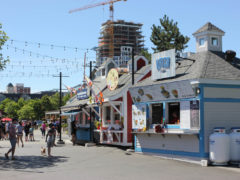
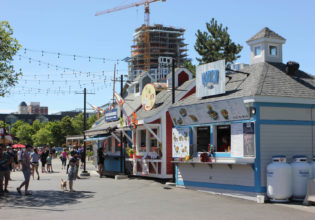

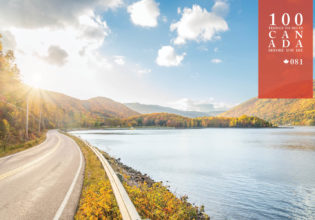
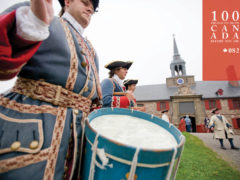
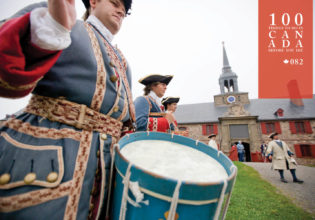



LEAVE YOUR COMMENT